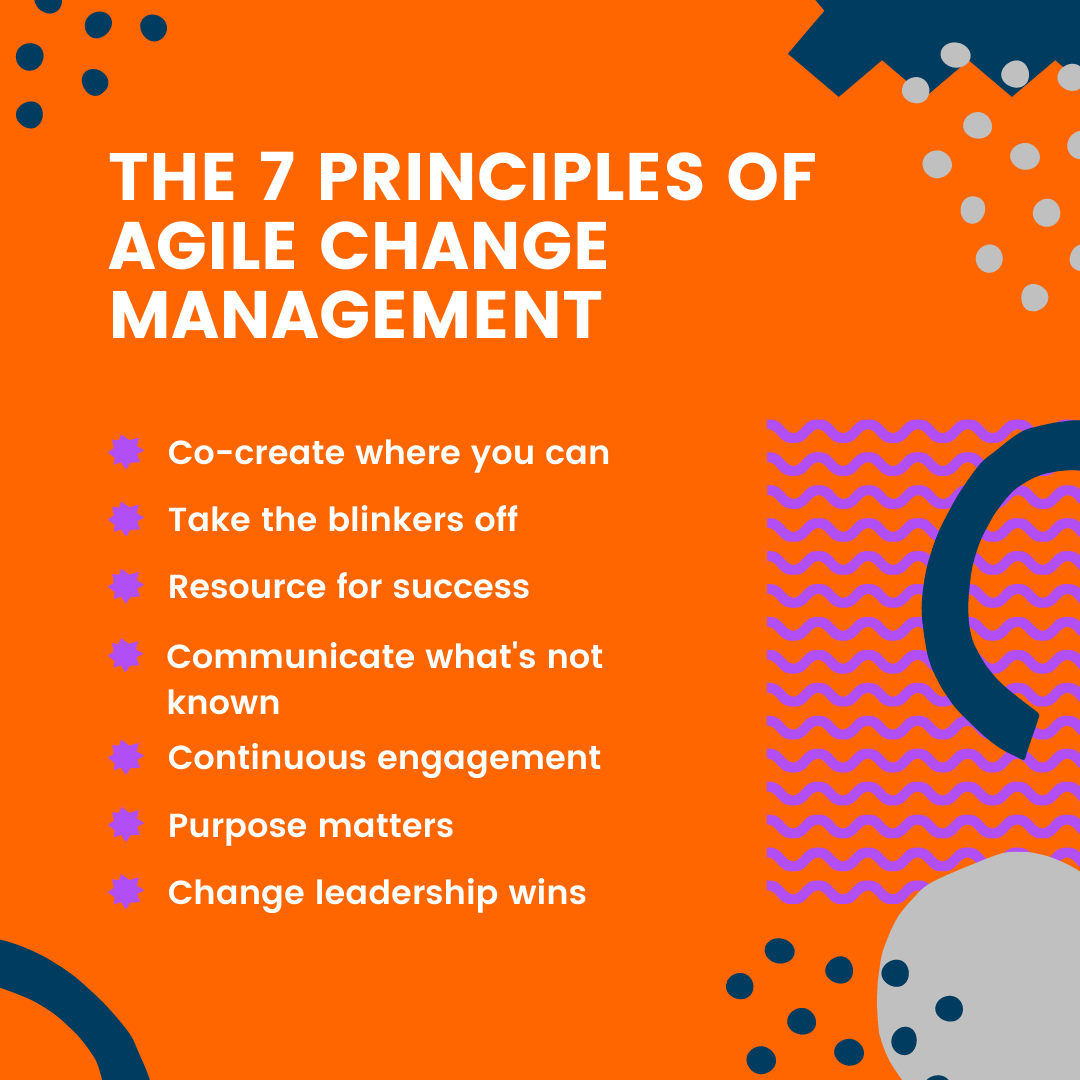Some-one asked me the other day what I thought were the principles of good agile change based on the work I had done. I’ve been really fortunate to work with a lot of good companies that do change well, and in reflecting on why those changes worked well these were the seven principles of agile change that came to mind!
I’d be most curious to hear yours… do share in the comments.
Principle of Agile Change 1: Co-create where you can
It’s hard to push back on the plan, if you’ve taken part in designing it. Bring in the end audience in the design of what the change is, and how you will roll out the change. Beyond reducing resistance to change, you may actually be designing a better change!
Principle of Agile Change 2: Take the blinkers off
Make sure you know what else is going on that could get in the way of your change OR could be an opportunity to leverage. Make the time to speak with other leaders and find out what’s happening in their parts of the business. Generate a change radar that tells you what is dropping at what point. Clear the runway for your change or juice it up.
Principle of Agile Change 3: Resource for success
Bringing in something new is not the time to be stingy and expect your managers and employees to wear multiple hats. Multi-tasking during change means everything is compromised. Create backfill for your employees, resource with dedicated change practitioners who understand both Agile and business agility and can show they have invested in upskilling in this space.
Principle of Agile Change 4: Communicate what’s known, what’s not known and when you expect to know more
To wait for perfect information is to create a vacuum, and that vacuum will surely be filled with rumour and innuendo. Neuroscience tells us our brains crave certainty and will react with high emotion when we are left in limbo.
Principle of Agile Change 5: Engagement wins every time
Continuous engagement is one of our three agile change capabilities. Change resistance is inversely proportional to the amount of stakeholder engagement that occurs. You don’t need a strategy to deal with the blockers. You just need to engage with people who will be impacted by the change. Engage with empathy, curiosity and frequently.
Principle of Agile Change 6: Purpose matters.
Purpose is bigger than What’s In it for me? (WIIFM). Purpose is big, enduring, the reason why people get out of bed to go to work enthusiastically. If you can align your change with purpose, people get it. It makes sense. If it’s not aligned with the company’s purpose, then forget about it.
Principle of Agile Change 7: Change leadership is critical.
The fish rots from the head. If your leadership team is not fully and visibly committed, you can’t expect anyone else to make the changes. A fully committed leadership team will override poorly designed change every time.
learn more in our guide to agile change management or purchase our Agile Change Management Course if you’re a change manager who is keen to move into the field of Agile or are supporting business agility.


































